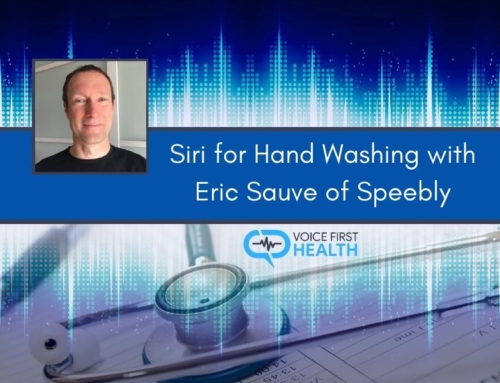VFH Episode 55
In this episode, Teri welcomes Rana Gujral, the CEO of Behavioral Signals, a company that allows developers to add speech emotion and behavioral recognition AI to their products.
Rana is also an entrepreneur, speaker, and investor, and has been awarded the ‘Entrepreneur of the Month’ by CIO Magazine, and the ‘US China Pioneer’ Award by IEIE. He was also listed in Inc. Magazine as an “AI Entrepreneur to Watch”. He has extensive experience in enterprise software, product development, strategy, business-building, and emerging markets. Rana previously served as an Executive Vice President at Cricut Inc where he headed engineering, strategy, technology and IT, and also held leadership positions at Logitech S.A., Kronos Inc., and Deutsche Bank AG, where he was responsible for the development of best-in-class products and contributed towards several award-winning engineering innovations.
Key points from Rana!
- The many reasons why it’s important that machines can recognize and express human emotion, including improving human computer interaction and boosting business KPIs.
- Looking at the intention behind the words that somebody is speaking and how that is being used in the financial and health sectors.
- Suicide risk and the ethics behind what happens when an AI is showing the meaning of what a person is saying.
Developing an Interest in Voice and Joining Behavioral Signals
- He had been following the voice space and fascinated by AI.
- In the last decade, the voice technology industry has really progressed. Five to seven years ago we were speaking to NLP or speech-to-text as cutting edge technology, but fast forward to now, it’s no longer considered cutting edge even though it’s very accurate with brilliant business models built on top of it.
- Voice technology has been directed towards creating a wide range of solutions in different domains, and what Behavioral Signals focuses on is how words are said, and what that says to the state of mind of a speaker. Rana believes this is the aspect of voice interactions that’s going to be a game changer.
- He also believes that it is the aspect of voice interaction that has been holding the whole interaction piece of voice technology back.

How the Technology Tells the Difference
- At the core of Behavioral Signals’ engine processes, is the variety of outputs when an interaction is being recorded. They go after who spoke when (diarisation) where they deduce basic emotions like anger, sadness, happiness, and frustration. They also go after specific aspects of tone change which is the trend of positivity within the duration of a conversation.
- They are less hang up on what is being said, and are focused more on the emphasis behind the words. That tells them a lot.
- An example is a study that was done at Yale University where they took a piece of content from YouTube and just took the audio out of it. They then deduced the emotional behavioral signals from it and mapped it out. Then they turned the video on and analyzed both the audio and the video, looking at the facial expressions and body language of the people in the video, and added that to the emotional and behavioral map that they were piecing together.
- The natural expectation there was that when adding those additional data points, in addition to just processing the audio piece, they could get more accurate, but what they found was that they actually became less accurate.
- That meant that when they were mapping based on audio only; there was a higher score than when they were also looking at the video. What they realized is that we as humans are fairly adept at masking our emotions through our facial expressions, but we can’t do that with our tone of voice.
- Scientists have proven that if one can accurately create an emotional behavioral map of an interaction, or decipher the cognitive state of mind of a participant, and understand the context of that interaction, they can predict what that person will do in the near future, and in some ways predict intent.
- For example, Behavioral Signals is working with collections and banks to predict if a debt holder is going to pay their debt or not, simply by listening to a voice conversation. They have been able to do that with a very high level of accuracy.
- They are also working with another company that is building a software platform to cater to patients with depression. The company using Behavioral Signals’ technology to predict a propensity for suicidal behavior.
The Ethics
- The technology could be misused and so people must be careful when using it. He believes companies like Behavioral Signals have a responsibility to protect the data.
- We are going to rely more and more on inanimate systems and machines, and the systems/machines will become more intelligent than humans









